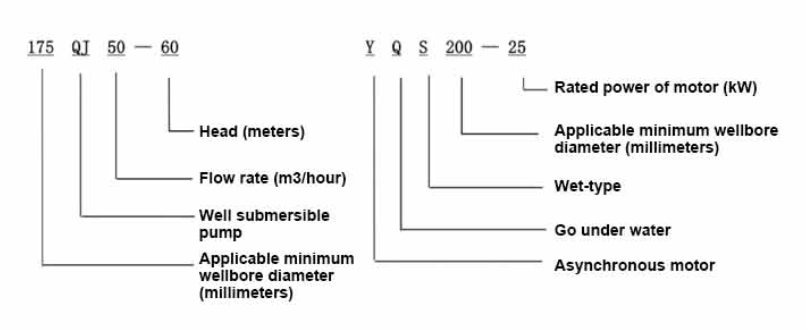Aug . 06, 2024 05:56 Back to list
Exploring the Benefits and Applications of Electric Submersible Pump Technology in Various Industries
The Electric Submersible Pump A Key Innovation in Fluid Management
Electric submersible pumps (ESPs) are a marvel of modern engineering, playing a crucial role in various industries by facilitating the efficient extraction and transportation of fluids, particularly in oil and water management contexts. An ESP is a type of centrifugal pump that is submerged in the fluid it is designed to pump. This innovative technology has transformed how we handle fluid movement in many applications, ranging from oil wells to wastewater management systems.
Working Principle
The fundamental principle behind an electric submersible pump involves the conversion of electrical energy into mechanical energy to move fluids. The pump consists of several key components, including a motor, a pump assembly, and related controls. The motor is usually located at the top, driving a series of impellers within the pump assembly. The impellers create a pressure differential that moves the fluid through the pump and into the discharge line, pushing it to the surface or into designated pipelines.
One of the most significant advantages of ESPs is their ability to function at considerable depths. These pumps can be submerged in water or oil reservoirs, which allows them to perform efficiently without the need for priming. Their design is specifically made for deep installations, making them indispensable in oil extraction and groundwater management.
Applications in Oil and Gas Industry
In the oil and gas industry, ESPs are widely utilized in exploration and production activities. When traditional pumping methods become ineffective, especially in low-pressure or high-viscosity situations, ESPs provide an effective alternative. They can handle large volumes of fluid over extended periods, making them ideal for continuous operation in challenging environments.
ESPs are capable of elevating fluids through long vertical distances, which is essential for recovering oil from deeper reservoirs. Their adaptability allows them to be used in various fields, including offshore platforms and onshore oil fields, enhancing overall production efficiency and reducing operational costs for energy companies.
electric submersible pump

Benefits of Electric Submersible Pumps
The benefits of ESPs extend beyond their operational capability. One of the most notable advantages is their energy efficiency. As electric drives become more advanced, the energy consumption of ESPs has significantly reduced, resulting in lower operational costs.
Moreover, ESPs are versatile and can be customized to meet specific requirements. They come in various sizes and configurations, enabling their deployment in different scenarios. Whether for agricultural irrigation, municipal water systems, or dewatering operations, ESPs offer tailored solutions that meet diverse needs.
Environmental Considerations
As industries increasingly recognize the importance of sustainability, ESPs play a crucial role in minimizing environmental impact. By facilitating the controlled extraction of groundwater and oil, these pumps help prevent over-extraction and promote responsible resource management. Moreover, advancements in technology are leading to the development of more environmentally friendly ESPs that utilize fewer resources and generate less waste.
Conclusion
Electric submersible pumps continue to be a critical component of modern fluid management systems. Their ability to efficiently transport fluids in various industries highlights their significance in resource extraction, agricultural applications, and municipal water management. As technology advances, the effectiveness and sustainability of ESPs will likely improve, ensuring their relevance in addressing the fluid management challenges of the future. With their superior performance, adaptability, and energy efficiency, electric submersible pumps remain at the forefront of innovative solutions for fluid transportation.
-
Submersible Water Pump: The Efficient 'Power Pioneer' of the Underwater World
NewsJul.01,2025
-
Submersible Pond Pump: The Hidden Guardian of Water Landscape Ecology
NewsJul.01,2025
-
Stainless Well Pump: A Reliable and Durable Pumping Main Force
NewsJul.01,2025
-
Stainless Steel Submersible Pump: An Efficient and Versatile Tool for Underwater Operations
NewsJul.01,2025
-
Deep Well Submersible Pump: An Efficient 'Sucker' of Groundwater Sources
NewsJul.01,2025
-
Deep Water Well Pump: An Efficient 'Sucker' of Groundwater Sources
NewsJul.01,2025
-
 Submersible Water Pump: The Efficient 'Power Pioneer' of the Underwater WorldIn the field of hydraulic equipment, the Submersible Water Pump has become the core equipment for underwater operations and water resource transportation due to its unique design and excellent performance.Detail
Submersible Water Pump: The Efficient 'Power Pioneer' of the Underwater WorldIn the field of hydraulic equipment, the Submersible Water Pump has become the core equipment for underwater operations and water resource transportation due to its unique design and excellent performance.Detail -
 Submersible Pond Pump: The Hidden Guardian of Water Landscape EcologyIn courtyard landscapes, ecological ponds, and even small-scale water conservancy projects, there is a silent yet indispensable equipment - the Submersible Pond Pump.Detail
Submersible Pond Pump: The Hidden Guardian of Water Landscape EcologyIn courtyard landscapes, ecological ponds, and even small-scale water conservancy projects, there is a silent yet indispensable equipment - the Submersible Pond Pump.Detail -
 Stainless Well Pump: A Reliable and Durable Pumping Main ForceIn the field of water resource transportation, Stainless Well Pump has become the core equipment for various pumping scenarios with its excellent performance and reliable quality.Detail
Stainless Well Pump: A Reliable and Durable Pumping Main ForceIn the field of water resource transportation, Stainless Well Pump has become the core equipment for various pumping scenarios with its excellent performance and reliable quality.Detail
